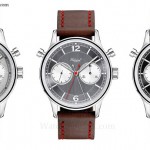In-Depth: Audemars Piguet Royal Oak Concept Split-Seconds Chronograph CFT Carbon
An innovative, impressive rattrapante movement.
On its face, the Audemars Piguet Royal Oak Concept Split-Seconds Chronograph GMT Date in CFT carbon is familiar. The aesthetic is the oversized, stylised, and modern look that defines the Royal Oak Concept (ROC), with aggressive pusher guards and a complex, open-worked dial. And this latest version has the added feature of a carbon composite case produced via Chroma Forged Technology (CFT) that adds both colour and luminosity to the material.
But the ROC Split-Seconds is more than just another Royal Oak chronograph because of the cal. 4407 inside. Launched in the 2023 titanium model, the is a latest-generation in-house movement and a notably innovative rattrapante calibre. The ingenuity of the movement lies in the fact that is both a traditional, integrated split-seconds chronograph and self-winding – a feat achieved with an elegant and patented automatic mechanism.
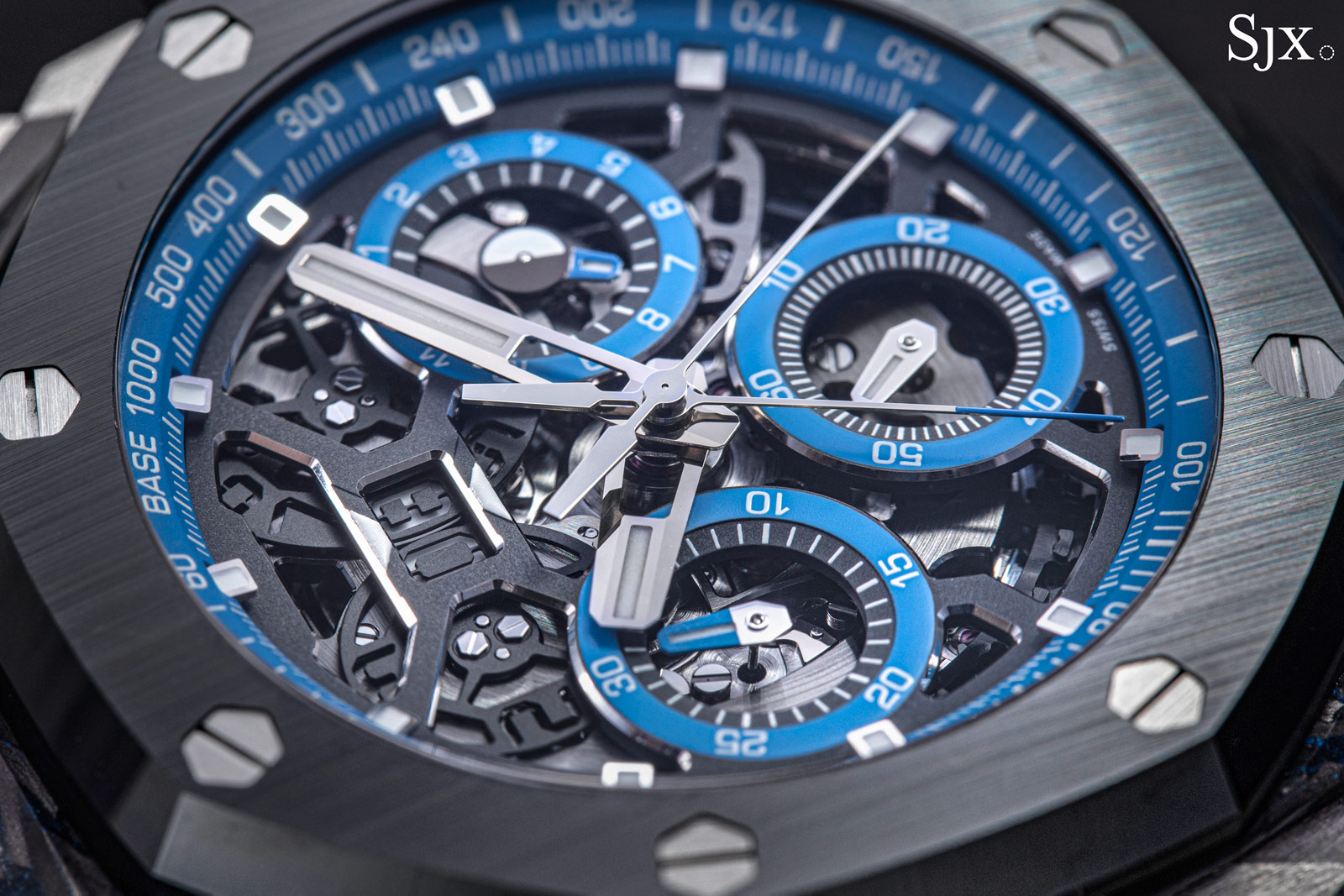
Initial thoughts
The very first Royal Oak Concept in Alacrite of 2002 was an enormous, heavy watch. Since then, the design of the ROC has been refined to become more wearable, and more lightweight thanks to new materials. The ROC Split-Seconds is perhaps the most wearable to date. Even though it’s a big watch, it doesn’t actually feel that large; the curved, tonneau-like form clings to the wrist well.
The look is typical ROC – technical, aggressive, and modern. While I like the look, it is a little over the top. The style is now; I am not sure how it will age.

Visuals aside, the ROC Split-Seconds is interesting in two respects. One is the CFT carbon case that’s an improvement over conventional carbon composite in appearance and durability. But more interesting, and also more impressive, is the cal. 4407.
Ironically, despite the huge case, the movement is thin for such a complex calibre. In fact, the cal. 4407 is complicated, simple, and clever at the same time. It manages to incorporate a traditional, integrated split-seconds mechanism into a self-winding movement with a full rotor. This is an industry first for the simple fact that a full rotor would ordinarily get in the way of a split-seconds. AP’s clever solution is an extra-large rotor hub that is hollow, allowing the split-seconds to neatly fit within. There are other solutions to the same problem, but AP’s approach is unorthodox yet sensible.
The fame and hype surrounding the Royal Oak means the brand and design often overshadow other attributes. Despite its over-the-top design, the ROC Split-Seconds is more than that and deserves credit for the smart mechanics inside.
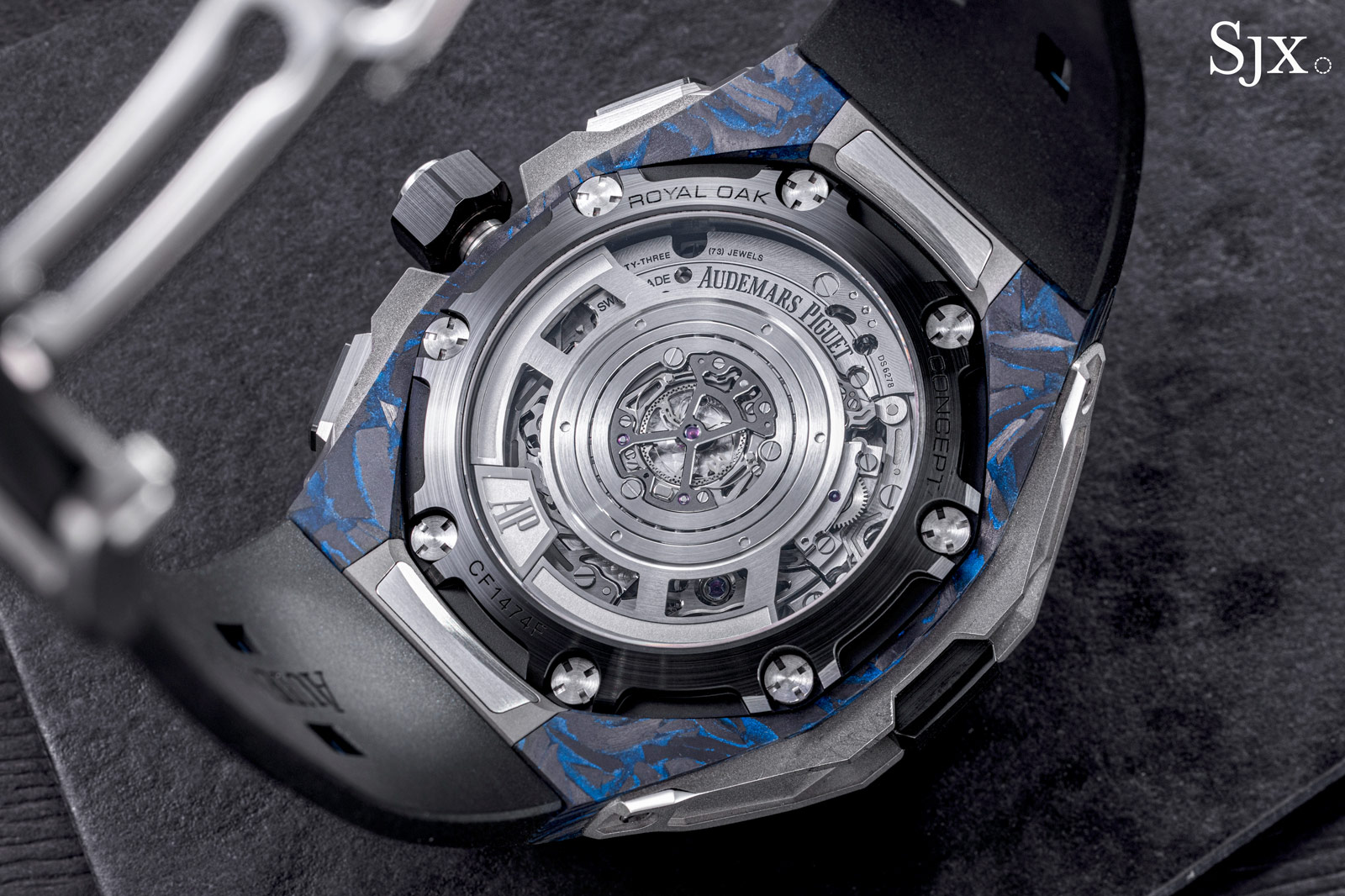
Blue lume carbon
Surprisingly, the ROC Split Seconds isn’t that big. The case is 43 mm in diameter and 17.4 mm high, giving this dimensions similar to the Richard Mille RM 65-01, probably its closest competitor. It is still a large watch but well wears for what it is, and certainly better than past generations of the ROC. The fact that the case is curved boosts its ergonomics.
In fact, the design creates a perception of size, particularly the titanium inserts on the sides of the case. The inserts contribute to the modern, technical look of the watch, but they have no function. They are purely decorative and function as frames for the chronograph pushers and GMT corrector.

All of the elements of the case – carbon, ceramic and titanium – are all executed well. The machining is precise and finishing is fine. The titanium inserts, for instance, are finished with linear brushing, frosting, and mirror polishing.
Also worth noting is the finishing of the ceramic parts, namely the bezel, pushers, and crown, which alternates between brushed and polished surfaces, with a perfectly sharp border between the two. AP probably finishes ceramic bests amongst watchmakers.
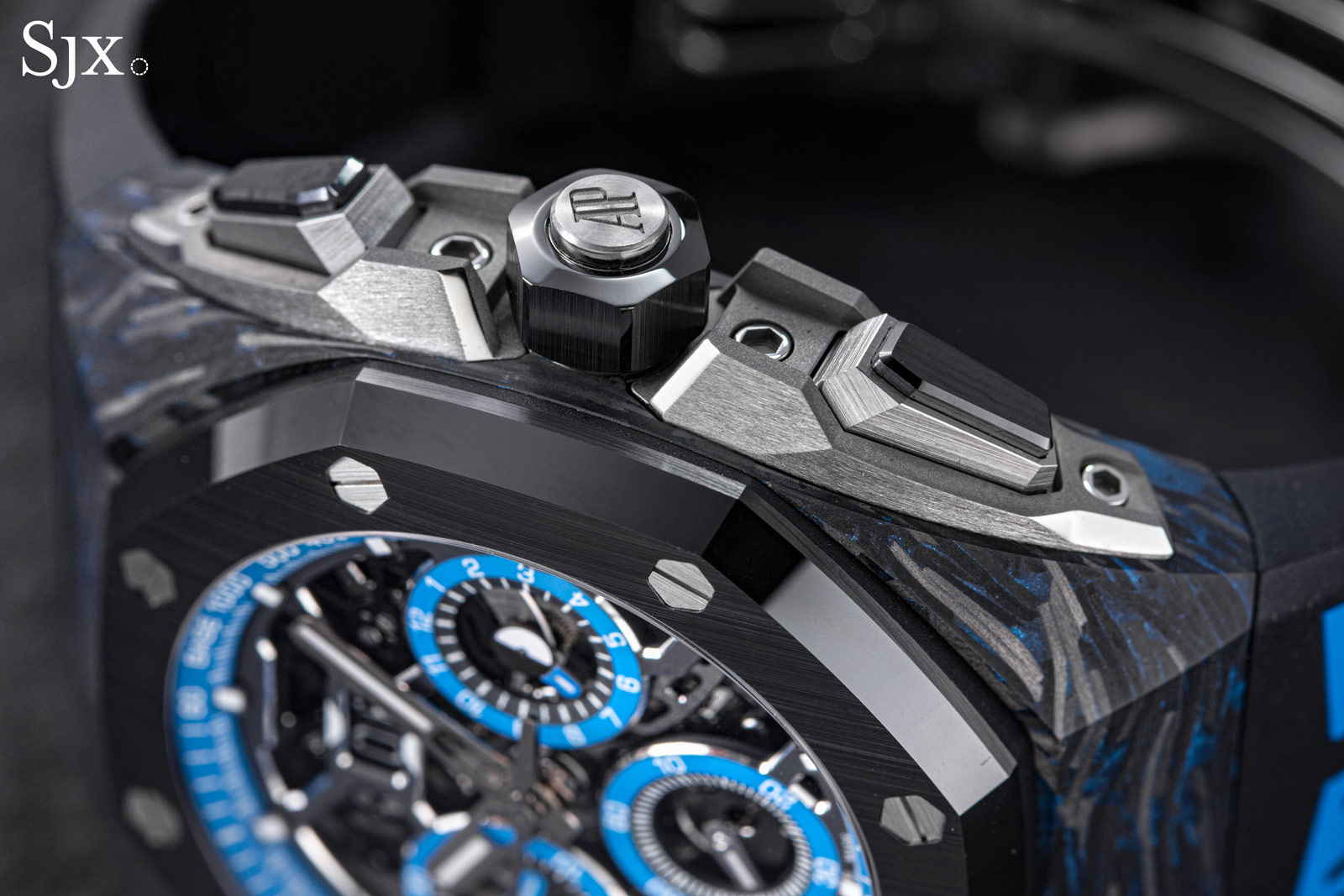

The case middle is entirely CFT carbon, though the carbon body contains a titanium inner case containing the movement, as is convention for carbon composite cases. This construction also allows the external parts like the guards, bezel, and back to be secured with screws.
The CFT carbon case is similar to conventional carbon composites in being comprised of carbon fibre suspended within a resin matrix, but it is novel in two respects. The first is the fact that the carbon is coloured prior to being added to the liquid resin – this is blue but it can be almost any colour – and the second is the addition of luminous pigments. As a result, the pigmented layers of the case glow blue in the dark.

But arguably more important than the visual novelty of the case material is the fact that CFT carbon is much more robust than earlier generations of carbon composite cases, solving one of the primary weaknesses of the material early on. AP pioneered carbon composite as a case material with the Royal Oak Offshore Alinghi Team of 2007, but the first-generation material was soft and not especially hard wearing. Two decades later many of the Alinghi chronographs look heavily worn due to the break-down of the resin that makes up the composite, due in part to longterm exposure to sunlight and moisture.
In contrast, CFT carbon is substantially harder than its predecessors and other conventional carbon composites according to AP’s research and development director, Lucas Raggi. This results from the fact that the colour lies within the dyed carbon fibre, rather than coloured resin as is the case with conventional coloured carbon composite. Such conventional composites demands more resin in order to enhance the colour, which in turn diminishes the proportion of carbon in the material. In contrast, CFT carbon maintains a high ratio of carbon as a result of its composition.
The hardness makes CFT carbon more practical as a case material. Add to that the versatility of colour and lume, and we’re likely to see AP employ CFT carbon on a larger scale in the future, perhaps even on other components such as bracelets.

The prototype Royal Oak Offshore Alinghi Team – note the extreme wear on the case. Image – Phillips
The complex, modern case design is paralleled by the dial, which is open worked to reveal the under-dial mechanics. There isn’t really that much going on below the dial – almost everything is on the back – but the aesthetic is still complex and suited to the overall style.
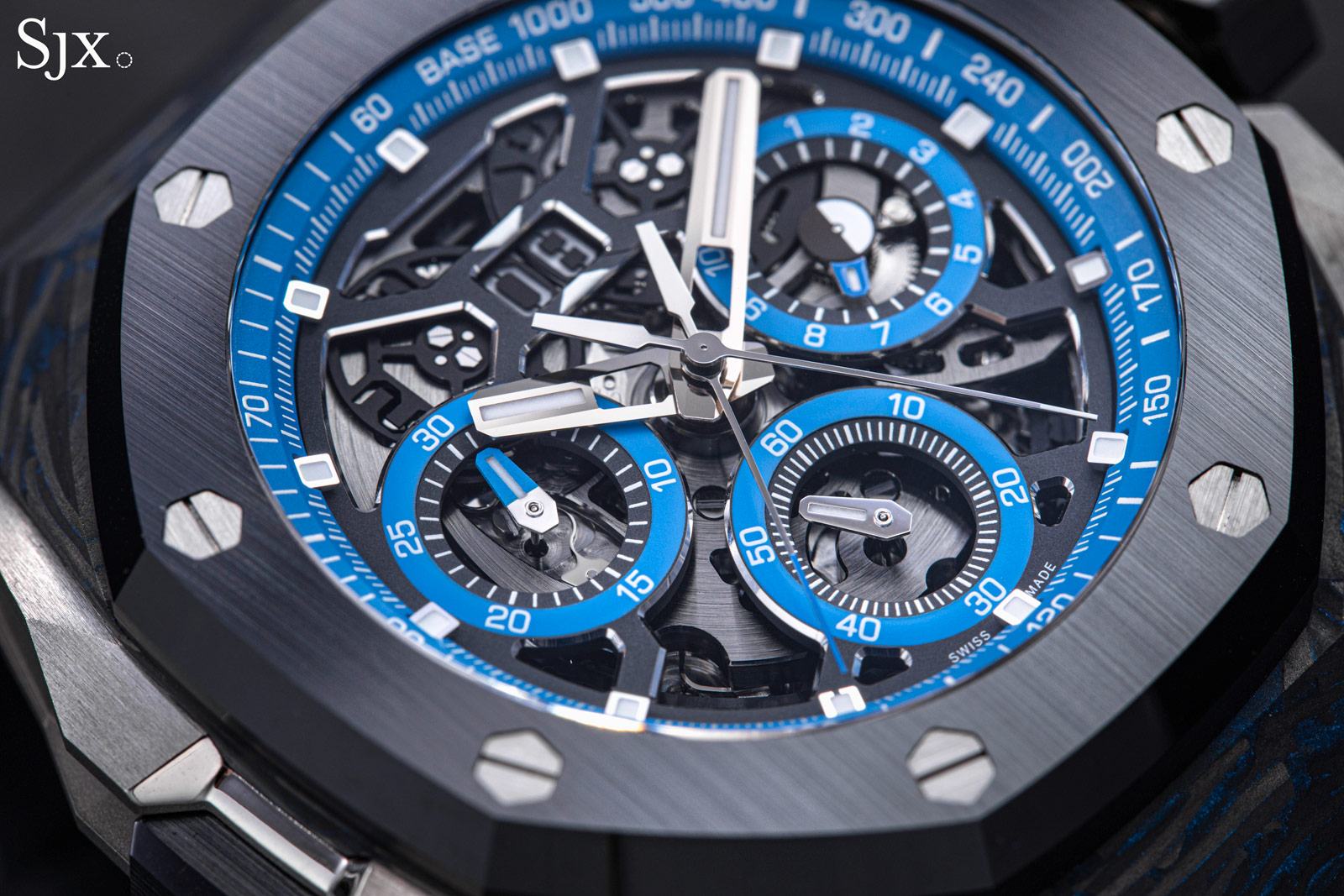
Attention to detail was clearly paid to the details of the movement visible on the front. Some of the highlights include the hexagon head screws for the date discs, which are open worked to form stencil-like numerals.

The cal. 4407
The cal. 4407 is part of the latest-generation movement family. Reflecting tremendous advancements that AP has made in vertical integration of movement development and production, the family includes the cal. 4401, the basic chronograph movement found in the Royal Oak Chronograph for example.
Notably, the family extends to the cal. 1000 of the Code 11.59 Universelle mega-complication. As a result, the cal. 4407 shares the same innovative split-seconds as the Universelle, and the two movements look almost identical from the back. Admittedly, the look lacks the depth and intricacy that is typical for a split-seconds chronograph, but that ironically due to the innovative construction where the rotor covers most of the movement.
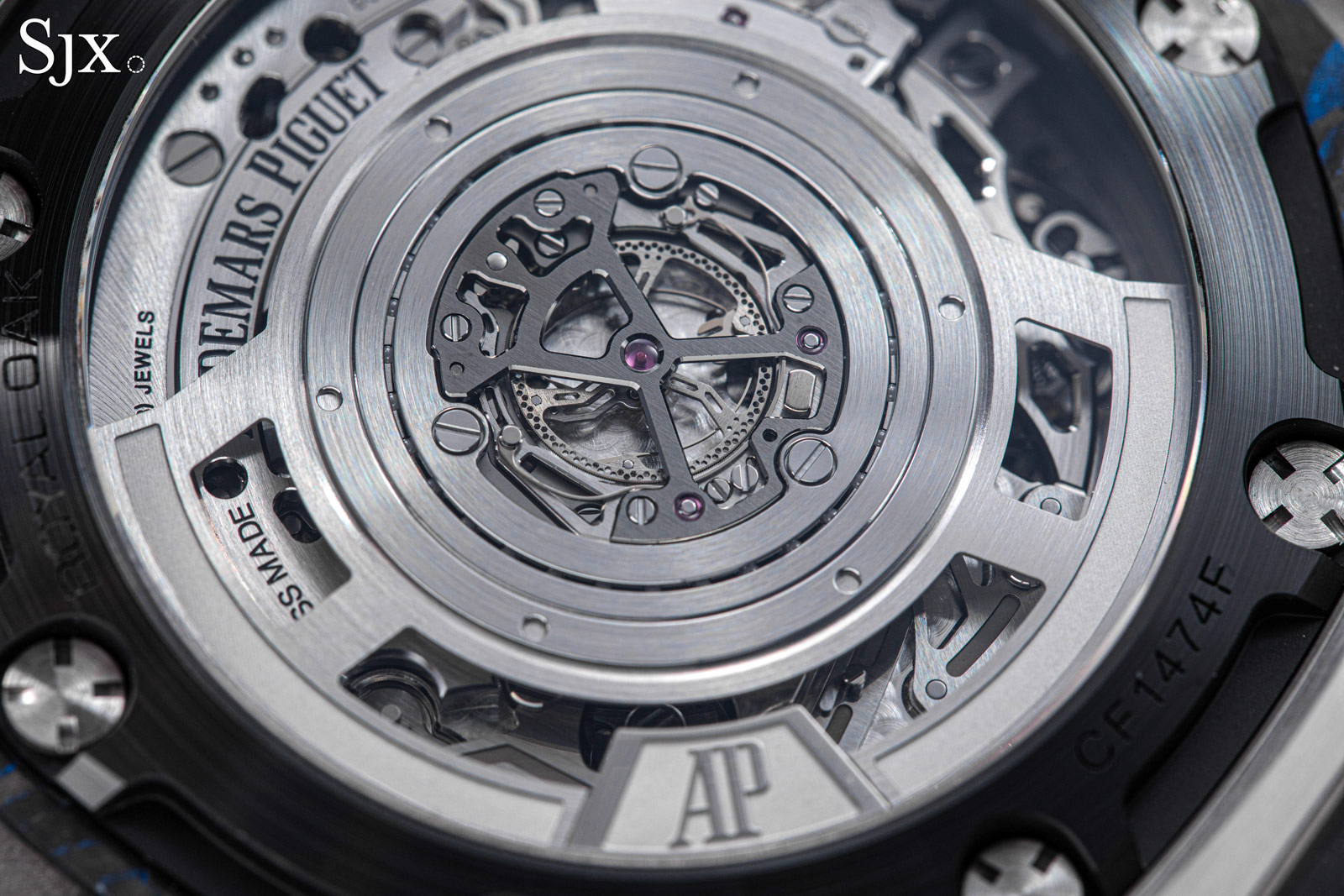
Like the other movements in the family, the cal. 4407 was conceived to be a large diameter but slim movement, ironic given the size of the ROC case. The cal. 4407 boasts a big date, second time zone, automatic winding, and a split-seconds chronograph, but measures a thin 8.92 mm. A good part of savings in thickness is thanks to the construction of the split-seconds mechanism.
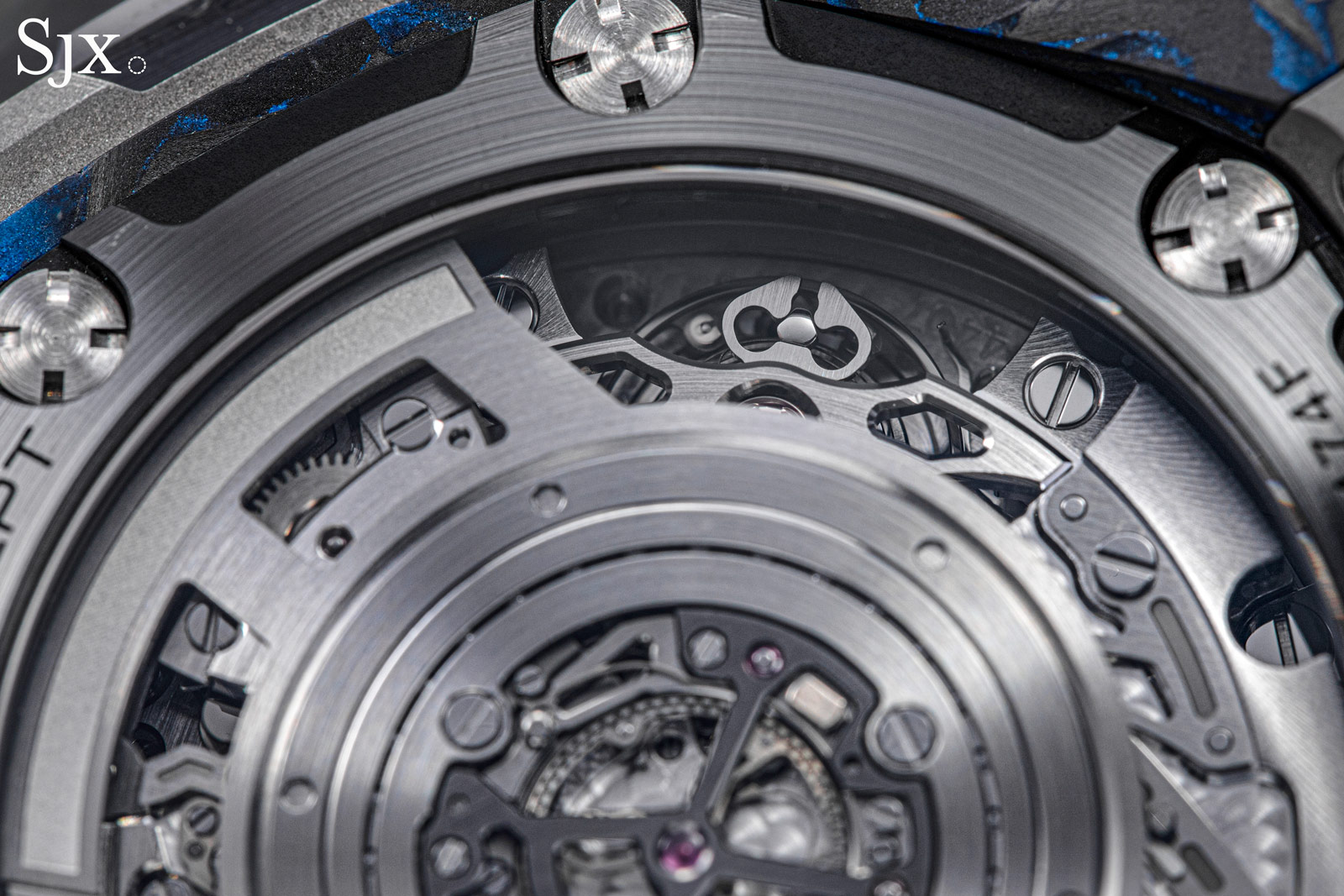
The unusual stud carrier that is a hallmark of the movement family
A useful comparison is the Vacheron Constantin cal. 3500 that is significantly slimmer due to a peripheral rotor, but arguably less functional due to substantially reduced winding efficiency. Regardless, the cal. 3500 is classically beautiful and ranks amongst the most outstanding modern split-seconds calibres. Another comparable calibre is the Vaucher movement inside the TAG Heuer Monaco Split-Seconds. It’s a high-spec, sophisticated calibre with a high-frequency balance, but one that employs a mostly conventional approach to the chronograph and automatic winding.
The cal. 4407, however, illustrates clever, elegant engineering in miniature. The entirety of the rattrapante mechanism is housed in a central hub (in red), inside the winding rotor’s ball bearing. The full rotor sits on this central hub and extends to the periphery of the movement (in green), as is the norm. This construction constrains the mechanism’s footprint both vertically and horizontally, making for a thinner but wider movement. And it also obscures most of the movement, leaving mostly leaving only the split-seconds and rotor visible. At first glance in fact, it is almost not recognisable as a split-seconds chronograph movement.
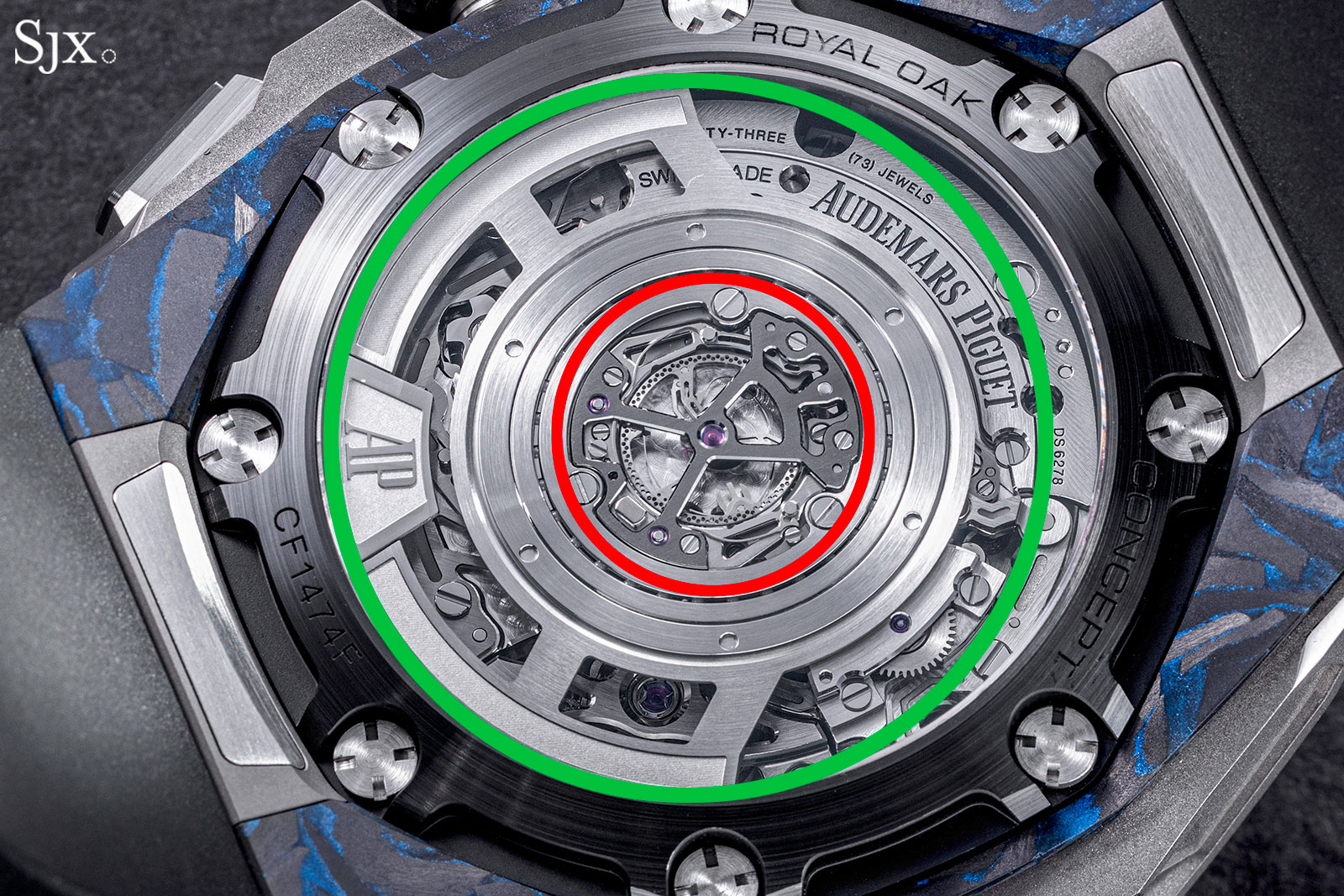
The split-seconds mechanism can be observed within the central hub, with most of its components discernibly familiar. A four-pillar column wheel interacts with a pair of sprung pincers that are the brakes for the rattrapante wheel. To fit within the small diameter of the central hub, the split-seconds has a compact arrangement that’s unlike traditional executions where the layout is elongated. Here the small column wheel located as close as possible to the rattrapante wheel. The column wheel, pincers, and rattrapante wheel all engage on the same plane.
The rattrapante wheel is constructed somewhat classically, with a sprung arm and heart cam engaging on a lower plane. There is no isolator as found in other high-end rattrapante mechanism, but this is arguably a justifiable concession once again due to the limited space.
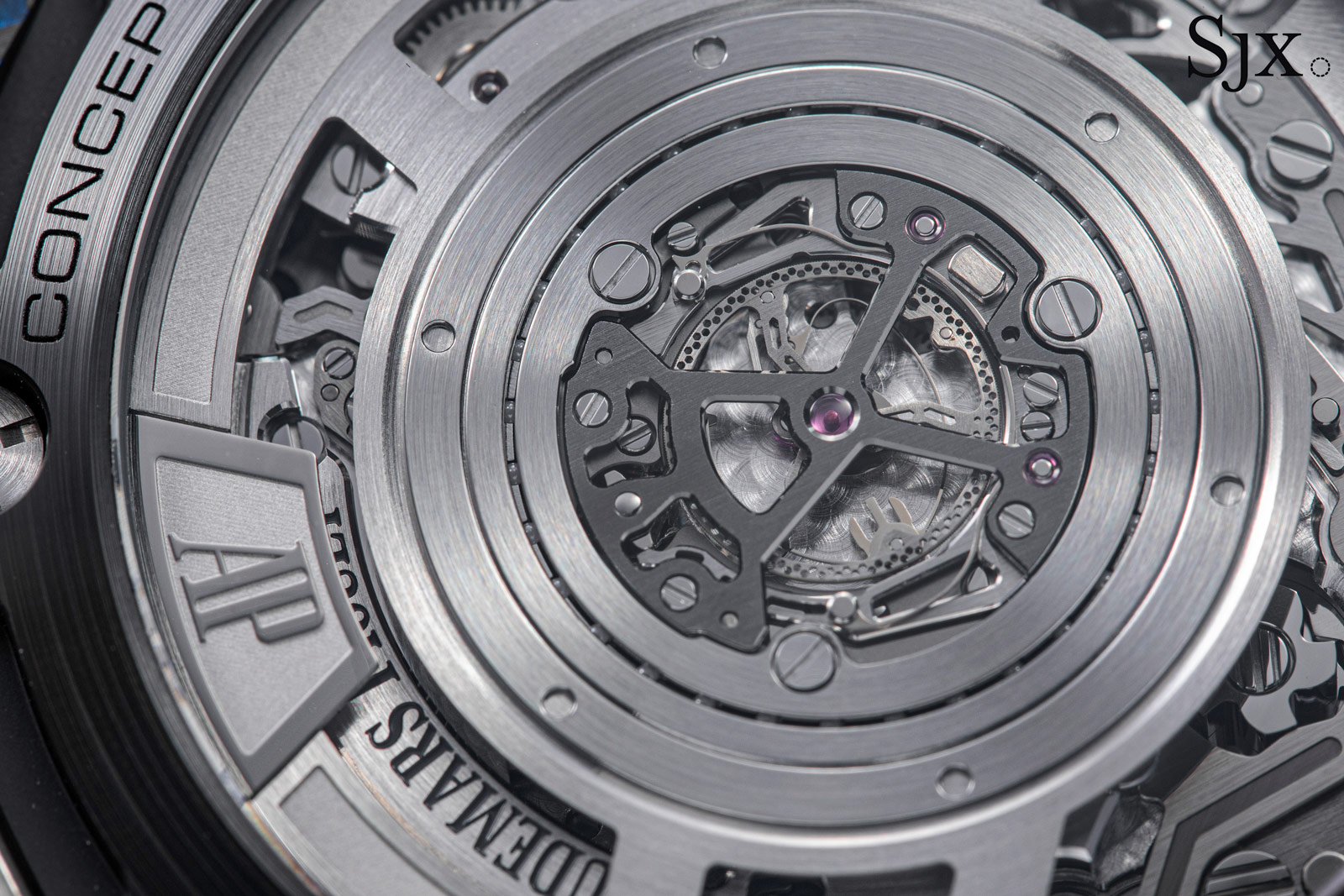
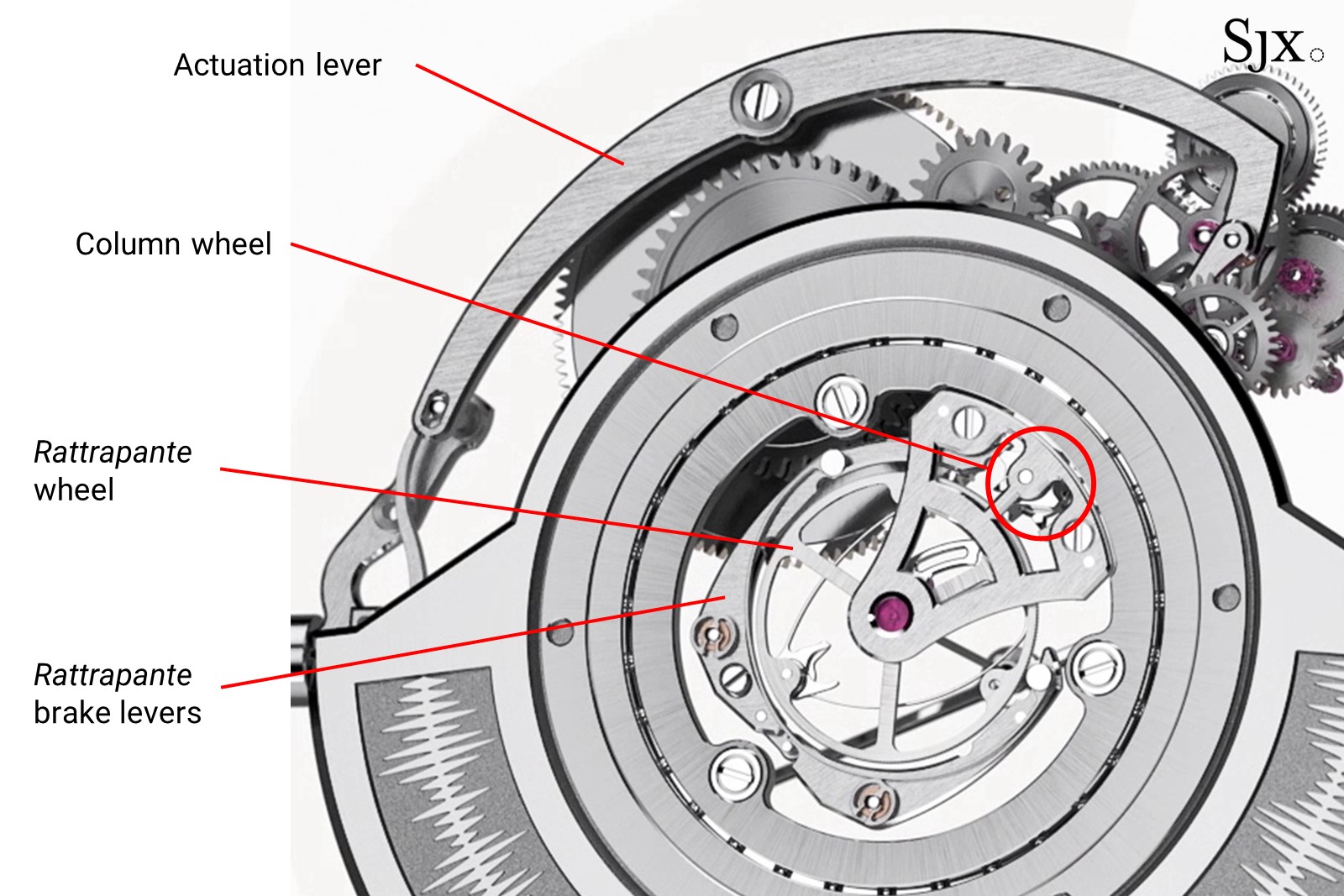
Also because of space constraints, the springs for the pincers are compact and functional, and the split-seconds mechanism lacks the spread of curved steel levers found in most classic rattrapante mechanisms.
Notably, the rattrapante wheel’s rim has a honeycomb cut-out pattern, which is both functional and stylistic. The honeycomb wheel and its angled spokes echo the modern appearance of the watch and cal. 4407, but the honeycomb also reduces its weight and inertia while enhancing the structural integrity.
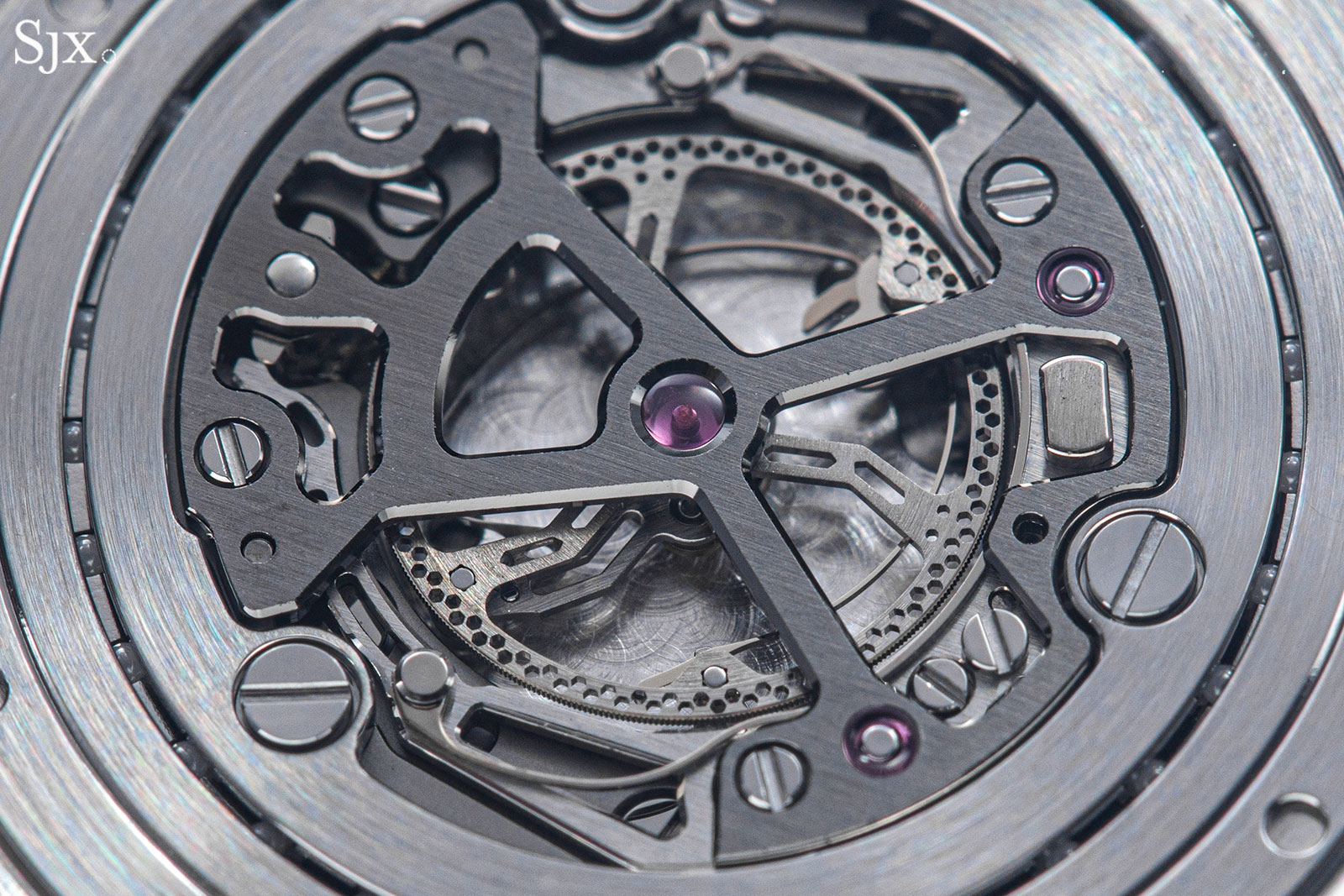
Impressive as it is technically, the movement looks a little monochromatic because almost all components are finished in rhodium. Some colour would have been helpful in giving the movement a bit more life, especially since much of it is dominated by the wide rotor.
Even though there’s little colour contrast, the quality of execution remains high. It is industrial haute horlogerie done well and typical of AP’s current movements. The finishing is characterised by neat machine decoration that is often finished off by hand. The only downside is that little of that is obvious, once again due to the construction.
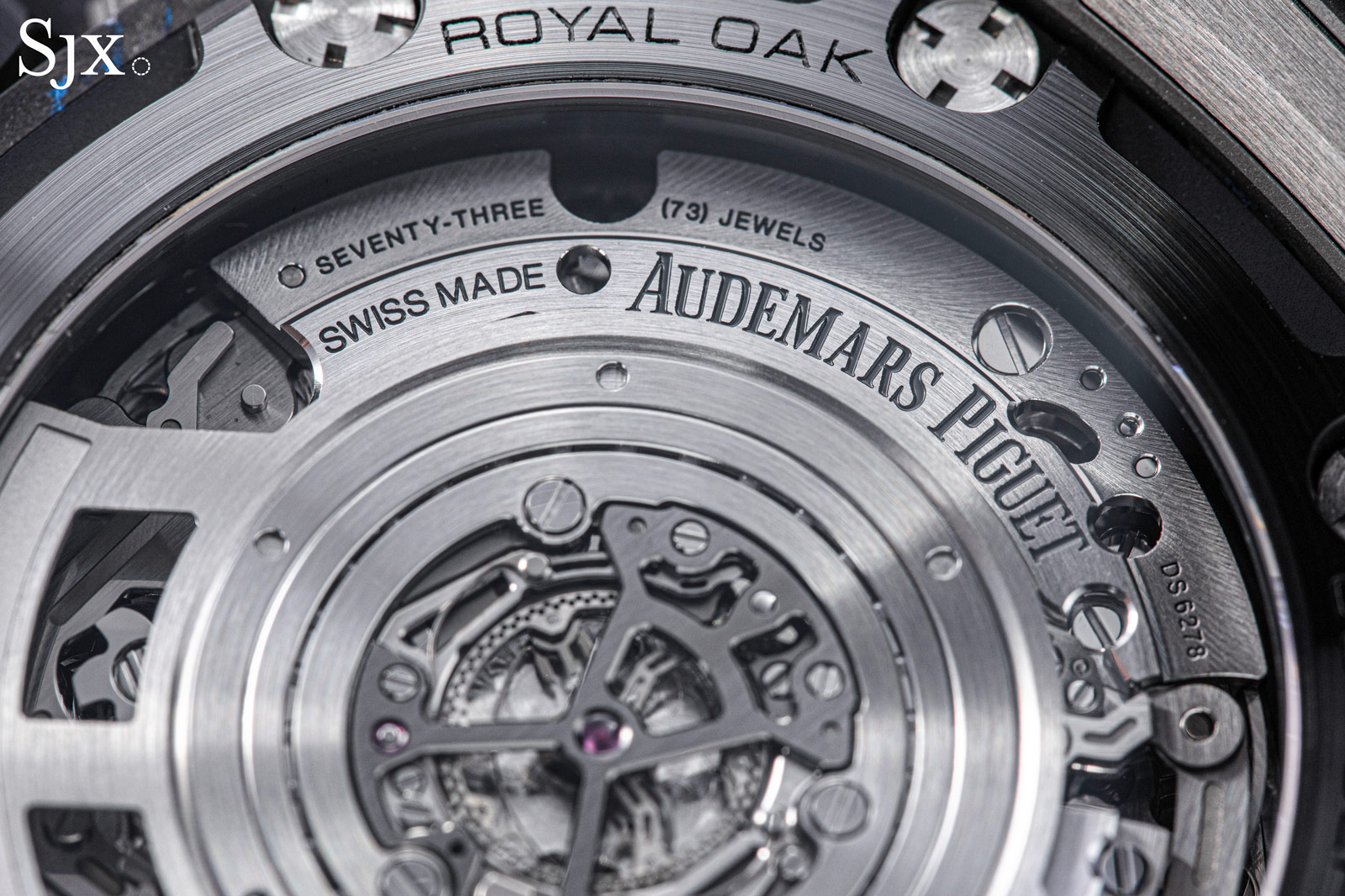
Concluding thoughts
The ROC Split-Seconds is a complex watch done well, with a high level of execution and innovation. The watch arguably gets less credit for its technical merits because it is a Royal Oak, a design famous (and infamous) enough it is impossible to escape from. This sort of innovation bodes well for AP, particularly with its 150th anniversary this year, which implies significant new launches for the occasion.
Key facts and price
Audemars Piguet Royal Oak Concept Split-Seconds Chronograph GMT Date
Ref. 26650FO.OO.D353CA.01
Diameter: 43 mm
Height: 17.4 mm
Material: Coloured forged carbon, black ceramic, and titanium
Crystal: Sapphire
Water resistance: 50 m
Movement: Cal. 4407
Functions: Hours, minutes, seconds, GMT, big date, and split seconds chronograph with flyback
Winding: Automatic
Frequency: 28,800 beats per hour (4 Hz)
Power reserve: 70 hours
Strap: Pair of rubber straps, with titanium folding clasp
Limited edition: No
Availability: At AP boutiques and AP Houses
Price: Approximately CHF200,000
For more, visit Audemarspiguet.com.
Back to top.




